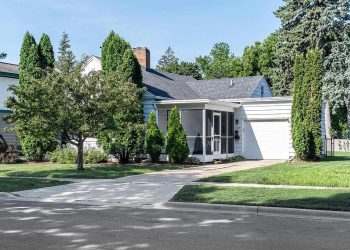If you are planning to install a new backsplash for your kitchen, you may be wondering how long this type of tile will last. Here are some important facts you should know. How much will the peel-and-stick tile cost? What is the average lifespan of peel-and-stick tile? Are there any issues with this type of backsplash? And finally, what are the alternatives to peel-and-stick tile? Let’s look at these questions and discover how long peel-and-stick backsplashes actually last.
Cost of peel-and-stick backsplashes
There are many different materials available for best peel and stick backsplash, from thin tiles to hardened silica gel. They are easy to apply and are an excellent choice for those looking for a durable, easy-to-clean wall accent. In addition to vinyl, there are also backsplashes made of thin natural materials like ceramic and wood, as well as realistic-looking pictures of stones and mosaic tiles. For the most part, however, the costs of peel and stick backsplashes are considerably lower than tiles.
The cost of peel and stick backsplashes varies widely, from a few dollars to hundreds of dollars per square foot. While they mimic real tile and require no special tools, they are temporary and can easily be removed if you grow tired of the design. If you’re installing peel-and-stick backsplashes yourself, you may have some questions about the installation process, so make sure to measure your wall space carefully and purchase extra panels.
Average lifespan of peel-and-stick backsplashes
While it’s true that peel-and-stick backsplashes are cheap and easy to install, they also pose a number of risks. For one, they are not made from real tile, which some decor experts find to be unprofessional. Furthermore, peel-and-stick tiles can easily peel off the wall if you don’t use permanent adhesive, which could cause damage to the wall behind. Fortunately, 3M’s Super 77 spray adhesive is a highly recommended peel-and-stick backsplash adhesive.
In addition to being quick and easy to install, peel-and-stick tiles have the added advantage of being easily swapped out for different tile patterns. Although these backsplashes can be removed easily if your tastes change, they can damage some types of walls. These tiles have a strong adhesive on the backside, which means that they may peel paint off walls if removed in the wrong way. However, peel-and-stick backsplash tiles made from high-quality materials are less likely to cause damage to walls.
Problems with peel-and-stick backsplashes
There are many benefits of a peel and stick backsplash. This type of backsplash can be applied to virtually any surface, from tile to plastic. As an added benefit, peel and stick backsplashes are inexpensive, easy to install, and will protect your walls. Many designers choose peel and stick backsplashes when they are redecorating a home. However, some problems with peel and stick backsplashes can put you off.
The first major problem with a peel and stick backsplash is that it may not be entirely flush with the wall. Many older homes have some amount of bowing in the walls. This may make the adhesive fail, so you should consider using a smaller tile to cover the non-square wall. You should also consider purchasing peel and stick backsplashes that have a flat surface. If you’re concerned about the shape of your walls, you can buy smaller tiles that stick directly to the wall.
Peel-and-stick backsplash
There are several alternatives to peel-and-stick backsplash that are both durable and attractive. You can purchase these tiles in a variety of materials, including vinyl, hardened silica gel, and thin, natural materials. The vinyl ones, for example, have a plastic or foam backing, and are available in a variety of colors, designs, and realistic photographs of natural materials. For example, you can use a vinyl peel-and-stick backsplash on a brick wall or around a fireplace.
Conclusion
Another type of backsplash is available in the form of a skim coating, which essentially retextures the wall. The primer is applied with a roller so it dries evenly on the entire wall. Wait for the primer to dry for one to three hours, then peel off the backing and install the backsplash. Afterward, the wall will have a beautiful, durable surface without the mess. If you have children, you can install a removable skim coating.





